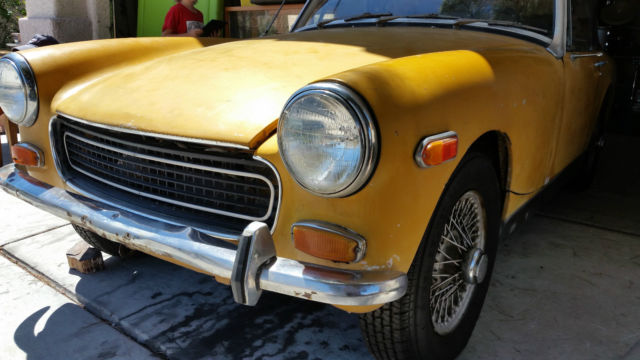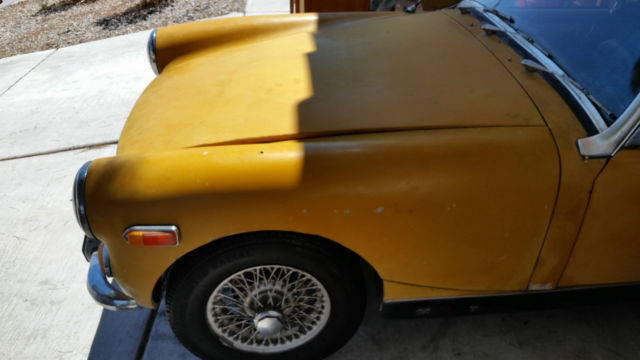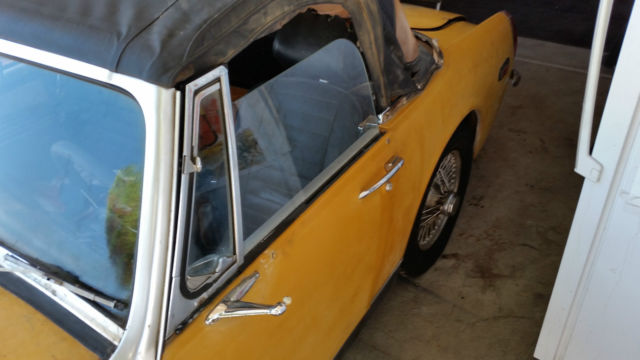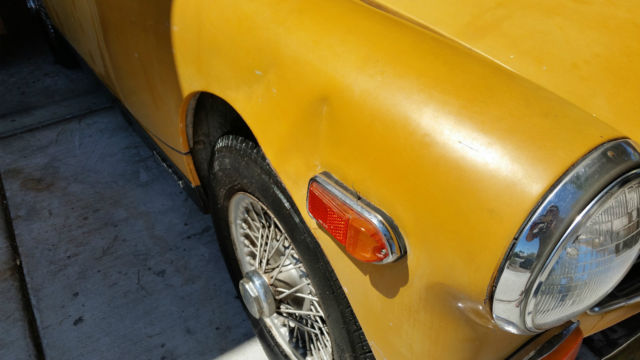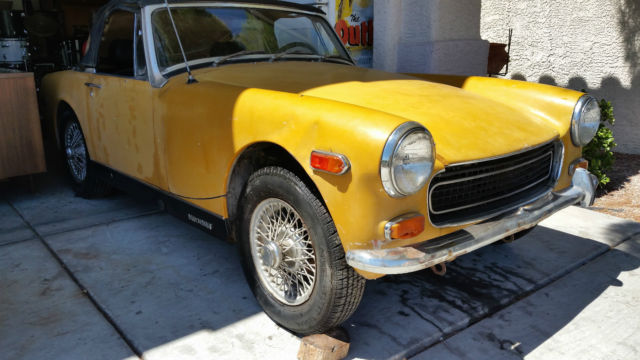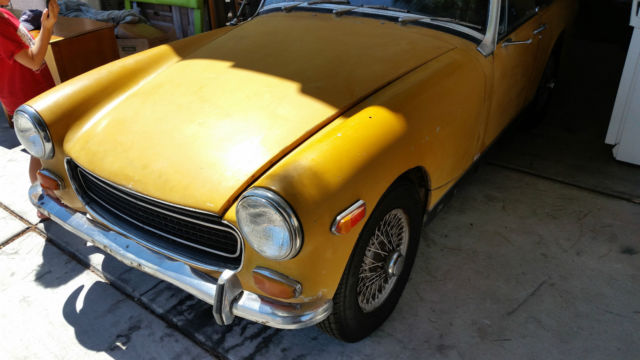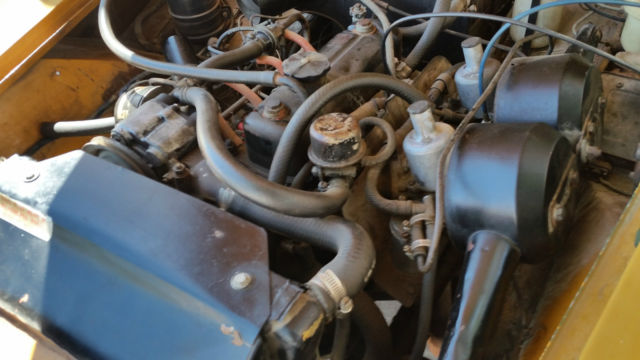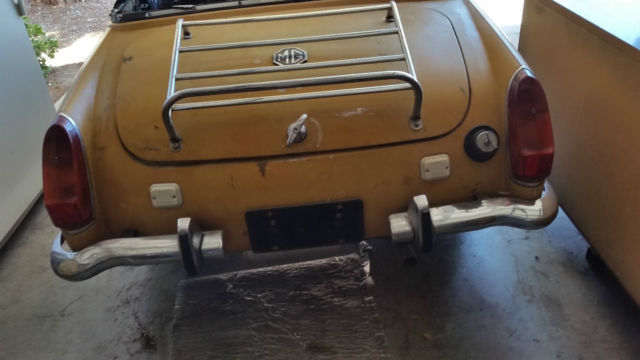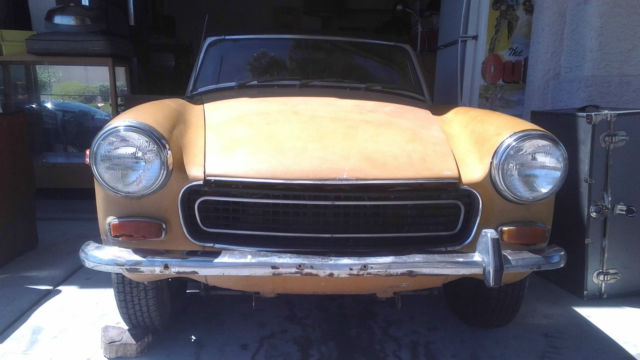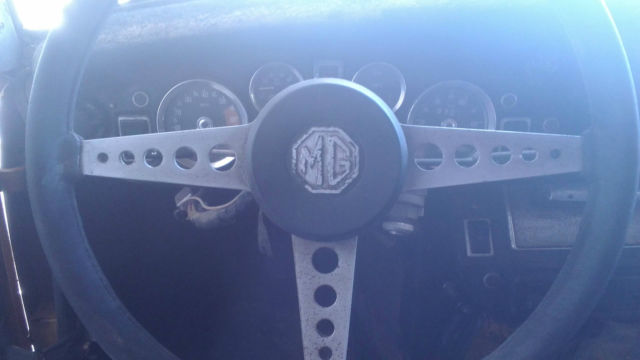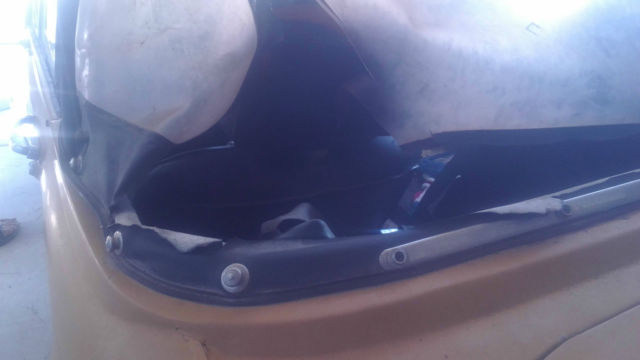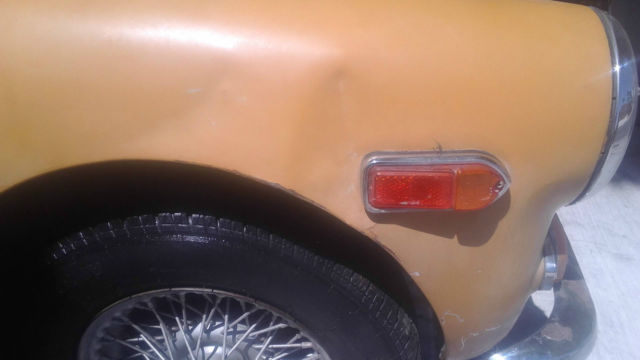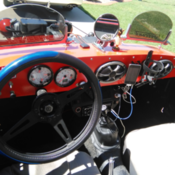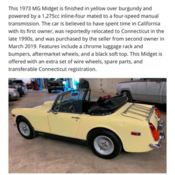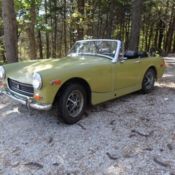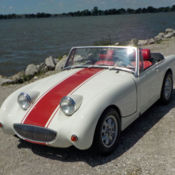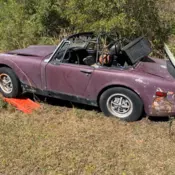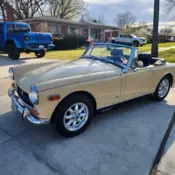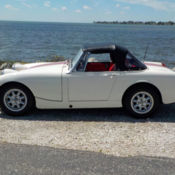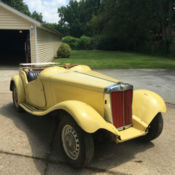1973 ORIGINAL MG CONVERTIBLE MIDGET NO RESERVE
1973 MG MGB
Solid project car with title ...no key and not tested. The owner of the car passed away in May. The title is clean with copy of deathcertificate and signed of by executor of estate. The story is that the was slowly be restored and then sat for some years. Tags say 2001 but found a smog cert. for 2008. In 2009 there is a list of things that were done to it, but cannotverify. Cool project that takes up very little room and a cave man can work on.. very simple... elegantstyle that is about as close as you can get to a go-cart. The car needs total restoration or with a little work a will make fun Sunday driver.Many consider the round-arch Midgets with chrome bumpers produced for model years 1972-1974 to be the most desirable.G Midget MkIII (1966–74)Round Wheel Arch MG Midget on Autotest
The engine now grew to 1275cc using the development seen on theMini-Cooper 'S'. Enthusiasts were disappointed that this was adetunedversion of the 76bhp (57kW) at 5800rpm Cooper 'S' engine, giving only 65hp (48kW) at 6000rpm and 72lb·ft (98N·m) at 3000rpm. A reduced compression ratio of 8.8:1 was used instead of the 9.75:1 employed on the Cooper S engine. The Midget used the 12G940 cylinder head casting that was common to other BMC 1300 cars, whereas the Cooper 'S' had a special head with not only larger inlet, but also larger exhaust valves; however, these exhaust valves caused many 'S' heads to fail through cracking between the valve seats. The detuned engine was used for reasons of model range placement – with the Cooper 'S' spec engine, the Midget would have been faster than the more expensive MGB. The hydraulic system gained a separate master cylinder for the clutch. The hood was now permanently attached to the car, with an improved mechanism making it much easier to use.
In late 1967 (1968 model year), US-spec cars received several safety additions: a padded fascia (dashboard) with smaller main gauges, collapsible steering column, scissor-type hood hinges, a third windshield wiper, additional side marker lights, and anti-burst door latches. The rear axle gear ratio was increased from 4.22:1 to 3.9:1, giving 16.5mph (26.6km/h) for every 1000rpm. This increased final drive ratio gave the 1275 model slightly better fuel economy than the 1098 model.
Minor facelift changes were made to the body trim in late 1969 (1970 model year), with the sills painted black, a revised recessed black grille, and squared off taillights as on the MGB. The 13-in Rubery Owen "Rostyle" wheels were standardized, but wire-spoked ones remained an option.
In August 1971, the compression ratio on North American engines was reduced to 8.0:1. Engine power output fell to 54.5bhp (40.6kW) at 5500rpm and 67lb·ft (91N·m) at 3250rpm.
The square-shaped rear wheel arches became rounded in January 1972. Also in this year, a Triumph steering rack was fitted, giving a gearing that was somewhat lower than earlier Midgets. A second exhaust silencer was also added in 1972. Alternators were fitted instead of dynamos (generators) from 1973 onwards.
Seven months into the 1974 model year, oversized rubber bumper blocks, nicknamed "Sabrinas" after the well-endowed British actress, were added to the chrome bumpers to meet the first US bumper impact regulations.
Many consider the round-arch Midgets with chrome bumpers produced for model years 1972-1974 to be the most desirable. These round-arch cars started leaving the Abingdon factory in late 1971. Between 1966 and the 1969 face lift, 22,415 were made, and a further 77,831 up to 1974
On Aug-13-16 at 14:49:02 PDT, seller added the following information:THE MILES READ 45576...WE DO NOT KNOW IF MILES ARE TRUE...
- Make: MG
- Model: MGB
- Year: 1973
- Mileage: 104,034
- VIN: gan5uc122269g
- Number of cylinders: 4
- Fuel: Gasoline
- Transmission: Manual
- Options: Convertible
- Vehicle Title: Clear Want to buy? Contact seller!
